Native Bitcoin Integration: A Game-Changer for DeFi and dApps
Discover how the Internet Computer (ICP) has revolutionized Bitcoin integration, enabling smart contracts to natively interact with the Bitcoin blockchain. Learn about this groundbreaking approach and its benefits. Read now to stay informed on the future of blockchain technology!

DeFi on Bitcoin is still not what it needs to be, partially because of its restrictions (that we discussed in detail) and partly because the solutions are not that waterproof. For instance, although wrapped tokens and bridges have brought DeFi to Bitcoin, in more than one instance we have witnessed them get REKT.
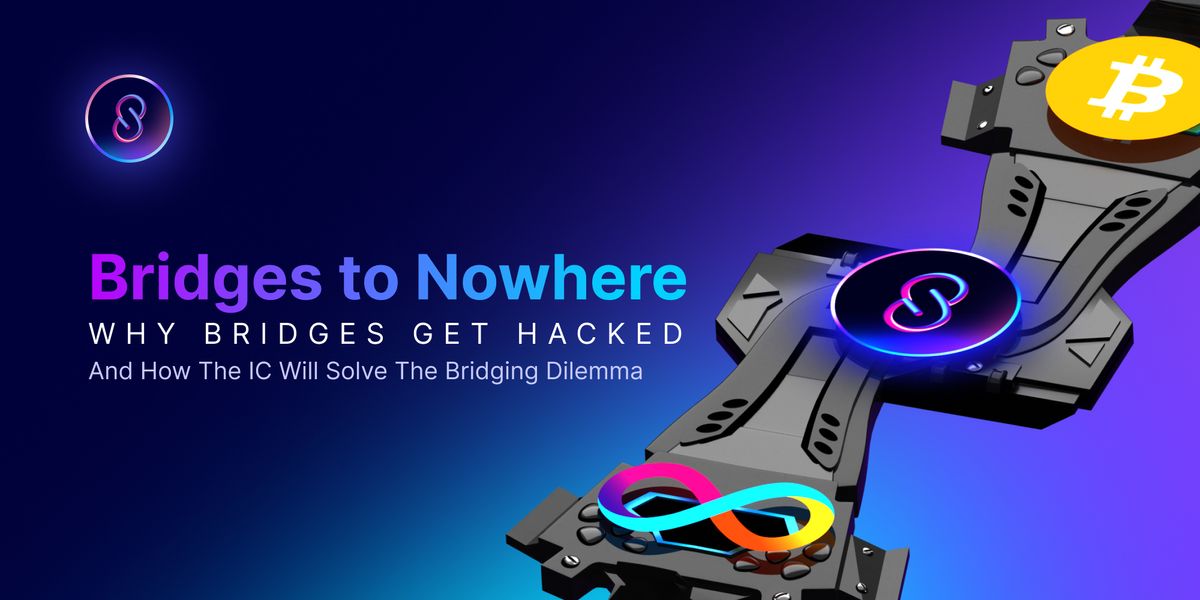
But what if there were no need to use bridges or wrap Bitcoin for it to access DeFi? Join us in this article as we explore how the Bitfinity uses this technology to integrate Bitcoin directly.
Technology Behind It All
As a third-generation blockchain the Internet Computer is designed to operate as a world computer for developers to build and host applications.
The role of ICP is more of a smart contract cloud – an alternative to traditional centralized cloud services like Amazon Cloud, where you can host systems, services, and AI end-to-end, unlike typical blockchains that primarily focus on transactions.
The DFINITY Foundation, led by Founder and Chief Scientist Dominic Williams, is the driving force behind the development of the Internet Computer Protocol (ICP). The foundation's innovative Chain Fusion Technology enables ICP to host natively multichain code, effectively creating a vast, interconnected world computer.

Bitcoin Native Integration
As we know, Bitcoin uses the unspent transaction output (UTXO) accounting model, where transactions create outputs that are used as inputs to other transactions and the cycle continues in that manner.
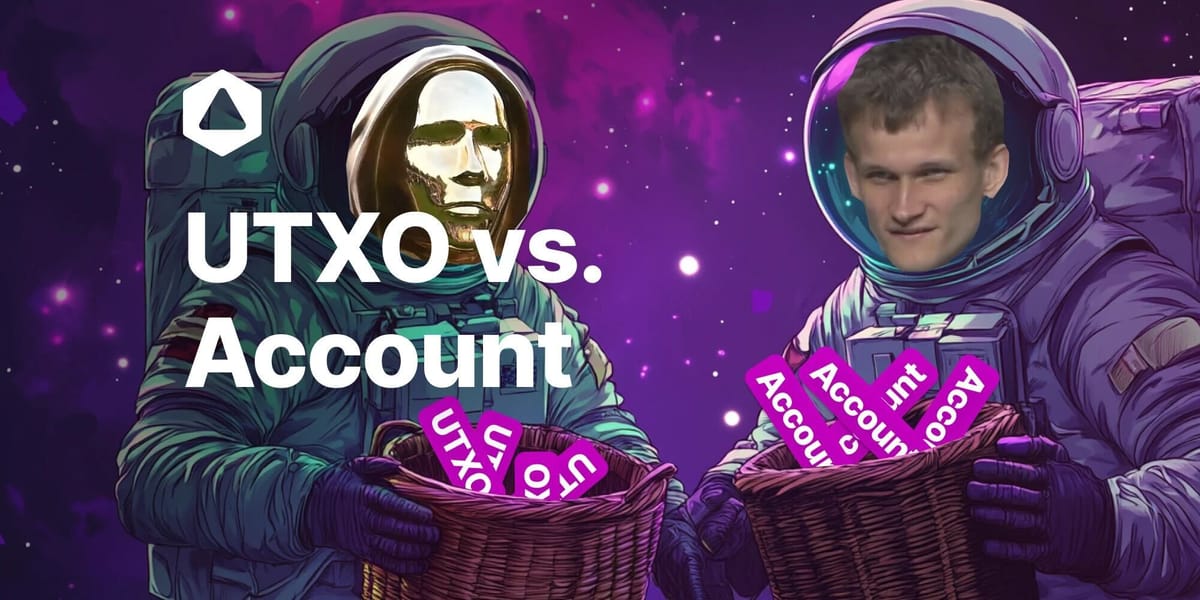
This basic idea and working is all good and well but it doesn’t provide a foundation for complex smart contracts. This is where ICP capitalized and allowed its smart contracts to contain Bitcoin addresses, which means a smart contract can, for the very first time, hold, send, and receive raw native Bitcoin on the Bitcoin blockchain.
The beauty of this is that there are no intermediaries involved. But how is this even possible? Let's find out in the next section where we take a look at the component of this direct integration...
Canisters
The first component and the key one to this integration are canisters which, as we began by saying, are similar to smart contracts on other blockchains. The only reason they are called 'canisters' or 'canister smart contracts' is that they work differently from traditional smart contracts by being asynchronous.
This means they can execute multiple operations in parallel which is essential to interact with other networks and with each other.
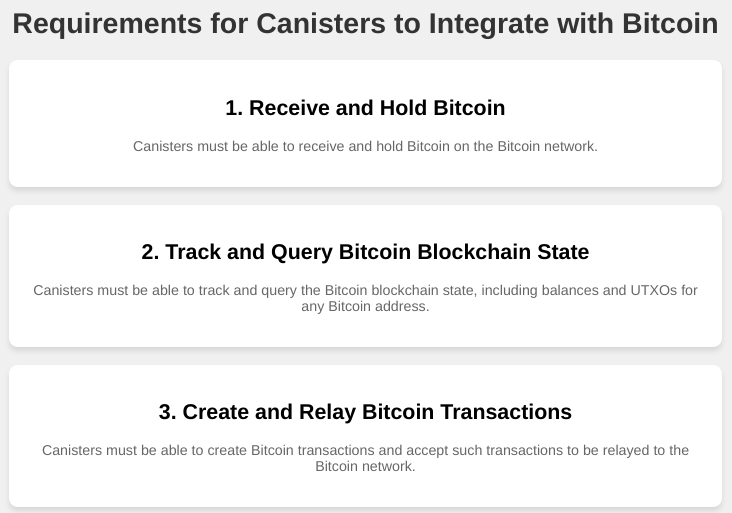
All these steps include several components, where we are going to take a look at each.
Chain-key Cryptography
Bitcoin integration uses Chain Key cryptography to assign each canister smart contract its own Bitcoin public key (which as we know contains the Bitcoin address). At the core of this is two chain-key signature schemes.
The first one is treshold ECDSA (Elliptic Curve Digital Signature Algorithm) which is responsible for canisters access to a Bitcoin public key and threshold Schnor which was implemented later in August 2024, to further extend the integration by allowing support for other Bitcoin protocols like Ordinals, Runes, and BRC-20 to ICP.
Get an inside look into how the Internet Computer powers native #BTC, #ETH and many other assets 🧑💻
— DFINITY (@dfinity) November 28, 2024
Welcome to Schnorr and ECDSA threshold signatures – or how #ChainFusion enables secure, multi-party signing without exposing private keys.
Check it out ⬇️ https://t.co/wfGG8d0xvW
Nodes
Nodes are also needed as they are independently owned and controlled computers that run the network's protocol. They are organized into different sub-groups, called subnets, where each subnet is designed to perform specific tasks or handle a particular type of transactions.
Currently the ICP has 37 of these subnets, where one of them is dedicated as a Bitcoin-activated subnet.

Each node on this subnet contains copies of all canisters and it is tasked with the following two main functions:
- Obtain real-time Bitcoin state and keep it on-chain in the replicated state of the Internet Computer. In order to be able to answer queries for UTXO sets and balances of Bitcoin accounts from canisters.
- Accept signed Bitcoin transactions from canisters, validate and submit them to the original Bitcoin network.
ICP subnets can talk to Bitcoin nodes around the world 🌏
— DFINITY (@dfinity) September 4, 2023
Enabling Bitcoin's state to be accessible to canisters 💻
Powering new use cases for #Bitcoin 🔥 pic.twitter.com/GBq7Z1agFA
Combining the Three Components
For canisters to create Bitcoin transactions and such transactions be added to the Bitcoin network directly, the three components must work together.
- A Holy Threesome: As we saw earlier, each canister has control over a unique ECDSA public key, which means it can request signatures for it. But to sign a blockchain transaction you need a private key. However, canisters never have access to private ECDSA keys, instead, the key exists as secret shares held by subnet nodes supporting the canister.
- Signing Process: When a canister needs to create a Bitcoin transaction, it requests signatures from the subnet nodes, who compute it using their individual shares. This process requires collaboration from more than one-third of the subnet nodes to generate a valid signature and include the transaction in the Bitcoin network.
Role of ckBTC in the Bitcoin Integration
You'll soon realize that it all involves canisters working with raw Bitcoin. But as we know, Bitcoin does not work with this much of speed...
This is where we come in, and also were ckBTC was for designed.

ckBTC or Chain-key Bitcoin is a token that is backed 1:1 by Bitcoin such that 1 ckBTC can always be redeemed for 1 BTC and vice versa.
While the two tokens (ckBTC & BTC) have the same value, the advantage of ckBTC is that it is fast and cheap to transfer. A transfer is finalized within 1-2 seconds compared to those on the Bitcoin blockchain, where you must wait for 6 confirmations.
Also, unlike other tokens pegged to Bitcoin, the ckBTC token does not rely on a third-party bridge for the conversion between BTC and ckBTC. Instead, it uses a ledger functionality controlled by two canisters: the ckBTC minter and the ckBTC ledger.
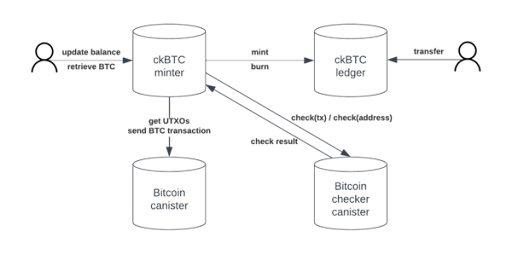
Why is Direct Integration on Bitcoin Considered a Breakthrough?
Internet Computer's approach to enabling smart contracts to directly hold and transact Bitcoin is considered a breakthrough for several reasons.
Firstly, it allows smart contracts to use native Bitcoin addresses, rather than relying on wrapped tokens or bridges which have been vulnerable to security issues and hacks.
Secondly, the private keys for the Bitcoin addresses are never fully assembled. Instead, ICP utilizes advanced cryptography called chain key, which distributes key shares to subnet nodes and allows the blockchain itself to act as the "private key" through threshold signatures.
A transaction is signed by nodes providing signature shares, which are combined into a valid signature, but no single node ever possesses the complete private key.
Adapting this to work efficiently with Bitcoin's ECDSA algorithm was a significant technical achievement.
Conclusion
The ability to use native Bitcoin addresses is a major breakthrough that has left the security and decentralized strengths of Bitcoin uncompromised. The only thing to do is to build upon where Satoshi left off, and finally expose Bitcoin to smart contract functionalities and all that comes with it.
As we know, Bitfinity can benefit from this truly innovative technology in ways that will bring real yield, real DeFi to Bitcoin, and more...

This way, the vast amount of Bitcoin that has been sitting idle for a while can now be used in new yield-bearing environments, which we'll discuss in next articles...

Connect with Bitfinity Network
Bitfinity Wallet | Bitfinity Network | Twitter | Telegram | Discord | Github

*Important Disclaimer: The information provided on this website is for general informational purposes only and should not be considered financial or investment advice. While we strive for accuracy, Bitfinity makes no representations or warranties regarding the completeness, accuracy, or reliability of the content and is not responsible for any errors or omissions, or for any outcomes resulting from the use of this information. The content may include opinions and forward-looking statements that involve risks and uncertainties, and any reliance on this information is at your own risk.
External links are provided for convenience, and we recommend verifying information before taking any action. Bitfinity is not liable for any direct or indirect losses or damages arising from the use of this information.







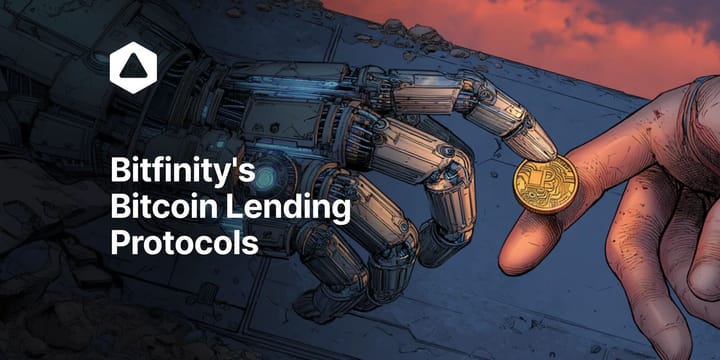
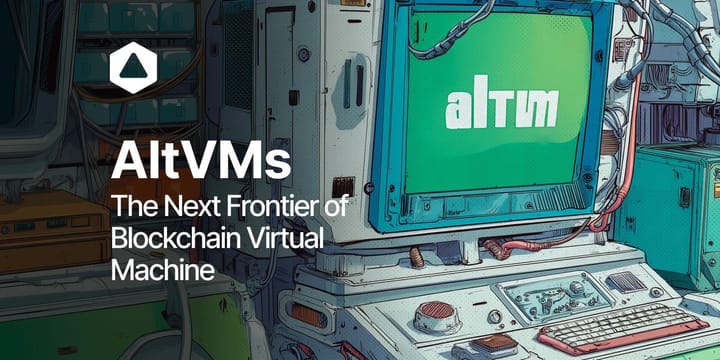

Comments ()